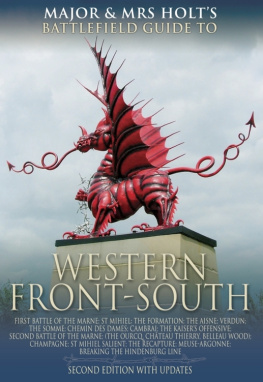ITerrence Holt
In the Valley of the Kings: Stories
Hippocrates reminds us to remember our teachers with gratitude, and I gladly thank them first. Mark Dintenfass, Alison Lurie, James McConkey, Dan McCall, Walter Slatoff, and Harold Brodkey all have a hand in whatever virtues these stories possess. Ellen Schwamm gave invaluable assistance when I was learning to edit; Charybdis would never have gotten off the ground without her aid.
The individuals and agencies who have provided material assistance include: the Djerassi Foundation, and Carl Djerassi in particular; the Fine Arts Work Center at Provincetown; the Pennsylvania State Council for the Arts; and finally, to Grace Paley, for her customary generosity, encouragement, and support: thank you.
Ron Sharp and Frederick Turner of The Kenyon Review, William Abrahams of Doubledays O. Henry Prize Stories series, Stanley Lindberg and Stephen Corey of The Georgia Review, Mary Kinzie and Reginald Gibbons of TriQuarterly, and Adrienne Brodeur and Samantha Schnee of Zoetrope all helped shape these pieces and sustain my career.
Robert Weil at Norton has been the beau ideal of an editor. His insight into these stories has been invaluable.
It is impossible to thank Nicole Aragi adequately. I can only say that it is through her that I have come to understand the doctrine of grace.
And to Junot Daz, for rewarding my stumbling efforts on his behalf far more than they deserved: thank you, even though you persist in calling me Professor.
Constance Holt knows far better than I how much she helped this book into being, but let this serve as a reminder to both of us.
Toby and Theo entered these stories at different points in their development, and added new reasons for finishing them. Thank you for keeping me awake so much of the time.
Lauries contribution to these stories is difficult to explain. Thats why I wrote them. And why I needed her to make sense of them. Thank you.
Videtur quod Author hic obiit.
The first case of which any record survives was reported in a small-town daily in upstate New York. Tabitha Van Order, the brief item reads, age five, was brought into the county hospitals emergency room with strange markings on her face and hands. She was playing with the newspaper, her mother reported. I thought it was just the ink rubbed off on her. But the marks did not respond to soap or turpentine. At the hospital, initial examination determined that the marks were subcutaneous, and the child was admitted for observation. They looked, according to the triage nurse, as though someone had been striking the child with a large rubber stamp. They look like bruises, the emergency-room physician told the Journal reporter. The department of social services was looking into the case.
This alone might not have warranted even three inches on page eight of a sixteen-page paper. What attracted the attention of the editor at the county desk (whose sister, a nurse in the E.R., had phoned in the story), and earned Tabithas case even that scanty initial notice, was one peculiar feature of those bruises, one fact about the case that stood out from the face of an otherwise unremarkable, seemingly healthy little girl. It was not that, over the next several days, the marks did not fade, nor exhibit any of the changes of hue or outline usual in a bruise although this was puzzling. Nor was it the childs silence, which she maintained three days with a patient gravity that impressed the most casual of observers. What claimed the attention of everyone who saw the child over the three days of her illness was the unmistakable pattern in those marks. They formed a word.
A word, certainly: no one who saw doubted for an instant what they saw. And it was something more, as well. Everyone struck with the sight of that pale, silent face and that black sign reported the same response: each said that the shock of seeing it for the first time was almost physical. It was as if, the nurse on the day shift recalled, seeing it, you felt it on your own facelike a blush. And indeed, after the initial shock, something like embarrassment did set in: the nurses could never bring themselves to utter the word, either to the child or among themselves; the physicians during their morning rounds half averted their eyes even as they palpated the affected areas. And although bruises were discussed day and night across the desk at the nursing station; although palpable purpura were the subject of long discussions in the cafeteria; although everyone down to the orderlies hazarded a guess as to the nature of the marks, the word itself went euphemized, persistently elided.
After embarrassment there followed another response, something of which communicates itself even now in the tone of that first newspaper article, a kind of delicacy, a reticence over the details of the case: a hush. That respectful silence grows ambivalently louder in the two pieces that in as many days followed, lengthened, and moved forward toward page one. As for the child herself, she made no complaint, nor in fact did she utter any word at all until just before the end, when she was heard to pronounce, in tones audible as far as the nursing station, the word spelled out by the bruise across her hands, cheeks, jaw, and (most plainly) forehead. She spoke the word in a piercing falsetto three times, and then, before the nurse could reach the room, the child coded, as the physicians assistant said, and died.
I LEARNED MUCH of this, of course, later, by which time several of the principals the nurses, the orderlies, the mother, and the physicians were beyond the reach of my own inquiries. But I believe the editor told me as much of the truth as he knew before he died.
Which was more than he told his readers. Even in the third article, which appeared on the fourth day following Tabithas admission to the hospital, and where the headline type has grown to fifty-four points, the text is most significant for what it does not say. It does not tell the precise form of those bruises that darkened across the childs features in her last twelve hours and then faded completely within minutes of her death although the darkening and the fading both are faithfully set down. Nor does it transcribe the syllables the child voiced three times before she died although the fact of her crying out is also given. It does not even mention that the bruises formed a word.
There was this aspect of the affair notable from the start: the embarrassment that overcame all who saw the word, as if the thing were shameful. Not, I believe, for what it said, but for being so patently, inscrutably significant: for being a sign. Few people could bring themselves, at first, even to acknowledge what they saw. It was as if an angel had planted one bare foot in Central Park, another on the Battery, and cast the shadow of a brazen horn over Newark. If such had happened, how many minutes might we suppose to have elapsed before anyone could have brought himself to turn to his neighbor and ask, Do you see? How could any of us discuss it without feeling implicated? So it was in the case of Tabithas word: it was too plainly part of a world we no longer knew how to address.
But there was more to this evasion, of course, than met the eye, and it is this that I find truly remarkable about the case. It is the function of that evasion, and the unmistakable conclusion it urges, that most impresses me: that everyone who saw the word, immediately, without understanding, without conscious thought or any evidence at all, knew that to see the word in print was a sentence of death.
No one, at the time, had any empirical reason for suspecting such, but in every account, even the first, I trace an instinctive recognition that it was the word itself that carried the contagion. It was several months, of course, before the means of transmission was identified, through the work of the Centers for Disease Control and Prevention in Atlanta and Lucerne, and ultimately the heroic sacrifice of the interdisciplinary team at the













